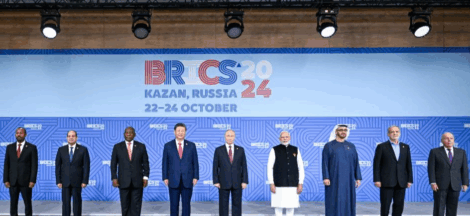By K Raveendran
It is no surprise that COP28 Dubai has proceeded the way it has. As member countries grappled with how to formalise and approach towards the most sensitive issue of fossil fuels, the climate summit had to be extended to try and work out a consensus. According to latest reports emerging the vibrant city, the COP28 presidency has released a proposed text for the final declaration, which would call upon nations to move away from fossil fuels as part of the global fight against climate change.
This marks the success of some of the most vocal states that insisted on stronger language to indicate the resolve to end the fossil era, a goal that was being vehemently opposed by oil and coal producing countries, particularly Saudi Arabia and the UAE. The conflict was inherent in the very presidency of the summit, with the CEO of the Abu Dhabi National Oil Company (ADNOC) sitting on that chair.
A remark by summit president Sultan Al Jaber there is ‘no science’ indicating that a phase-out of fossil fuels is needed to restrict global heating to 1.5C had caused eyebrows to be raised. He went to the extent of claiming that a phase-out of fossil fuels would not be sustainable. In fact, there were exchanges between him and delegates at a women-oriented event on the sidelines of the main summit, where he said there was no point in pointing fingers.
OPEC members have been promoting the idea of targeting emissions rather than fossil fuels, through technologies to capture and store emissions. But the problem is that carbon capture is exorbitantly expensive so that the focus shifts to financial resources. This would mean replacement of phase out with phase down in the declaration’s language. But the vast majority of countries preferred a phase-out.
India reportedly raised the issues relating to phasing out of coal, which it said won’t be possible any time in the immediate future. New Delhi wanted differential goals to be set for phasing out, with developing countries requiring more time and financial resources to pursue climate change goals as there is a conflict between such goals and the aspirations of the people of developing countries, which add to the carbon footprint.
Globally coal has dominated the power sector for the past 30 years, and according to Rystad Energy 2024 will mark the start of the fuel’s decline as solar and wind generation grow in popularity. New electricity supply from renewables is expected to outstrip power demand growth, leading to coal’s displacement starting next year and compounding in the coming years. As a result, coal-fired generation will fall marginally to 10,332 terawatt hours (TWh) in 2024, down 41 TWh from 2023. This is a relative drop in the ocean, but it’s a sign of things to come as renewables continue their growth trajectory.
Investments in coal capacity and overall usage have fallen in Europe and North America in recent years due to a combination of strict emissions policies and abundant availability of affordable natural gas supplies. Yet, enduring growth in Asia, primarily China, has kept global coal consumption buoyant. Even so, coal will be gradually displaced by the rapid development of low-carbon power sources, ushering in a cleaner, leaner system even as investments in new capacity in Asia continue over the next few years.
Thanks to abundant coal reserves and the need to add energy supply quickly to support economic growth, Asia is responsible for more than three-quarters of the world’s coal power generation. Coal generation capacity continues to grow in the region, but the pace of new projects is slowing amid environmental concerns. Countries around the world that are highly dependent on coal, like China, Germany and the US, are developing renewable capacity fast enough and at favourable economics to displace coal easily.
Europe and North America are systematically replacing coal generation with cleaner sources like natural gas and renewables, reducing coal power capacity by more than 200 GW since 1990. Europe’s decline is mainly driven by strict emissions policies, while North America has primarily replaced coal generation with gas power as abundant regional production has slashed prices.
Asia has added more than 40 GW of new coal capacity in each of the last five years and is expected to add 52 GW next year. In other words, Asia will add more coal capacity in 2024 than the total installed capacity in Argentina. Most of this new capacity is in China, followed by India and Indonesia. The additions are expected to continue until 2027, albeit slower, after which coal power plants will begin to decline. (IPA Service)



